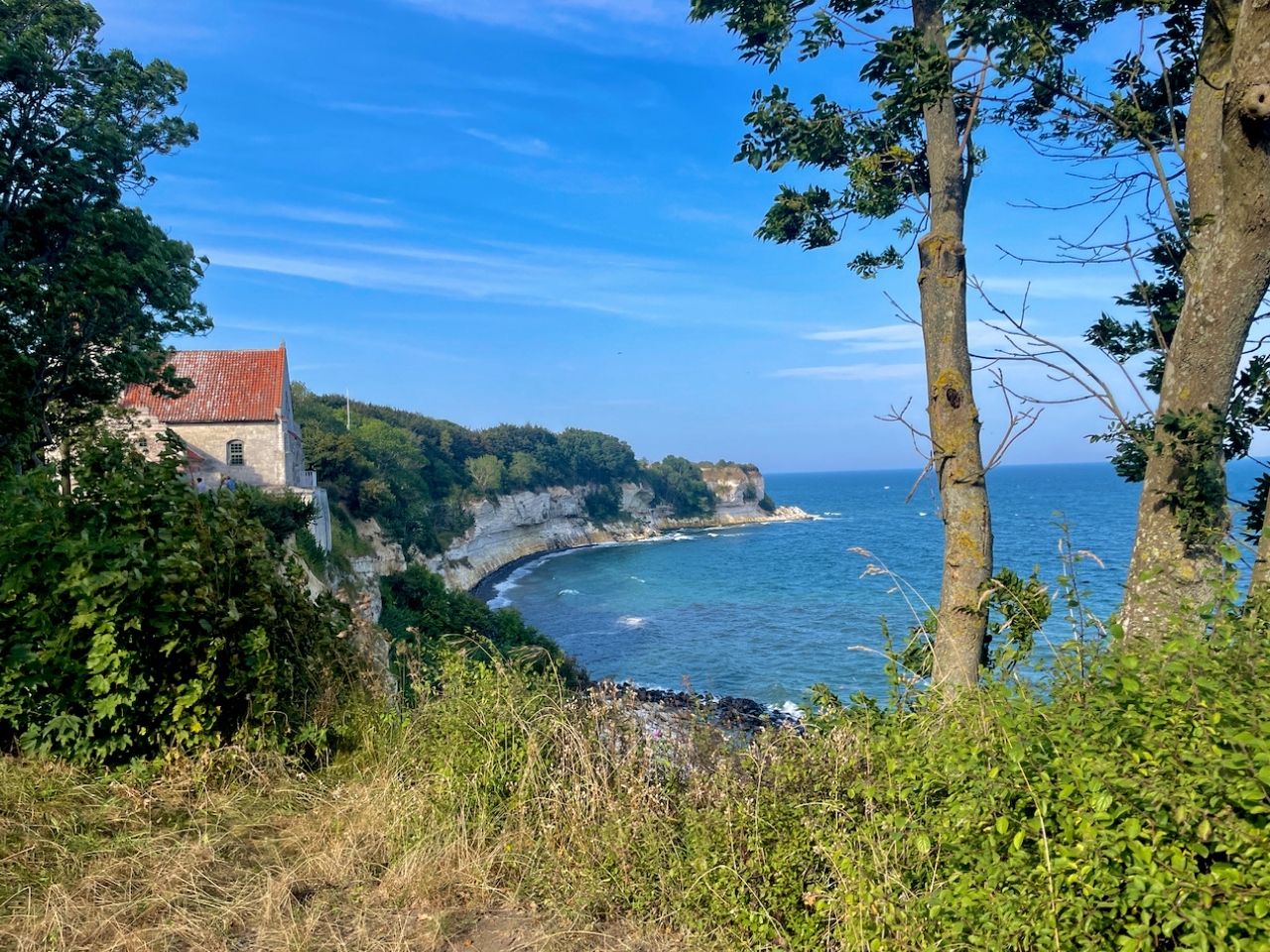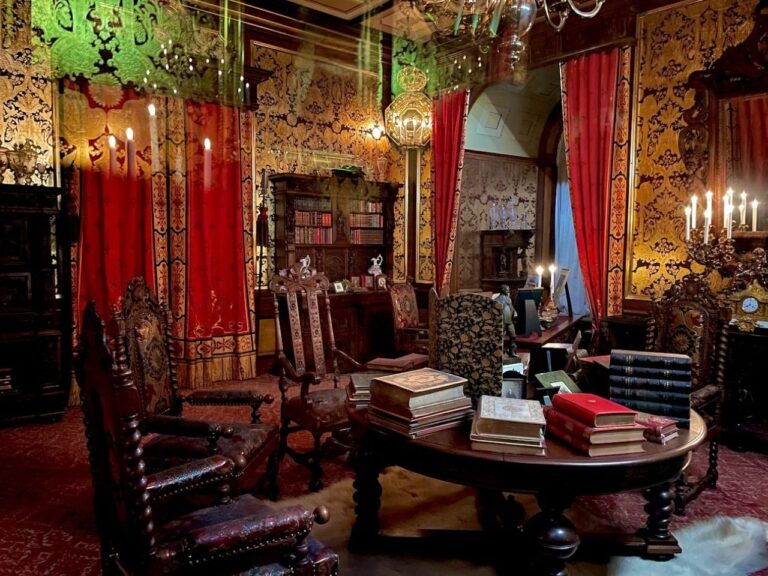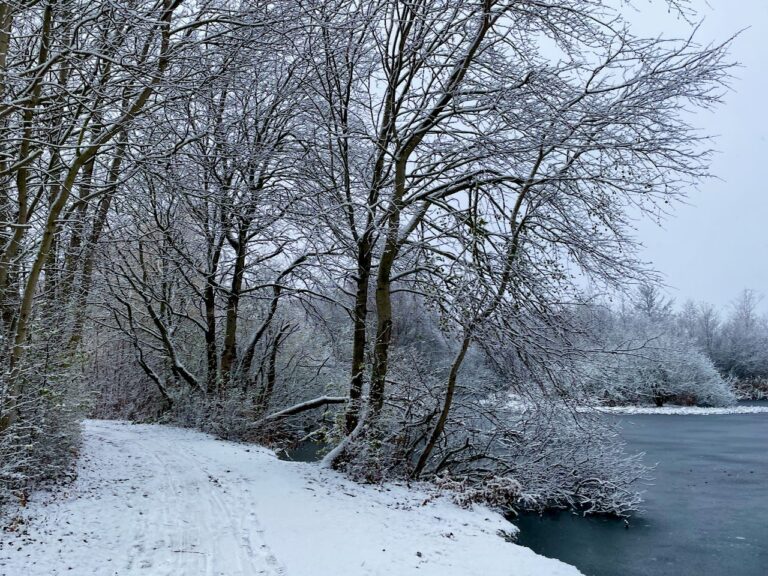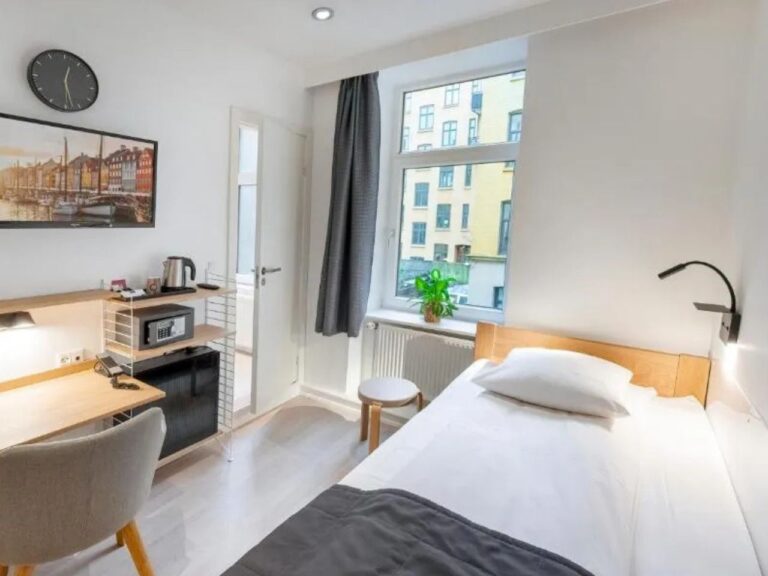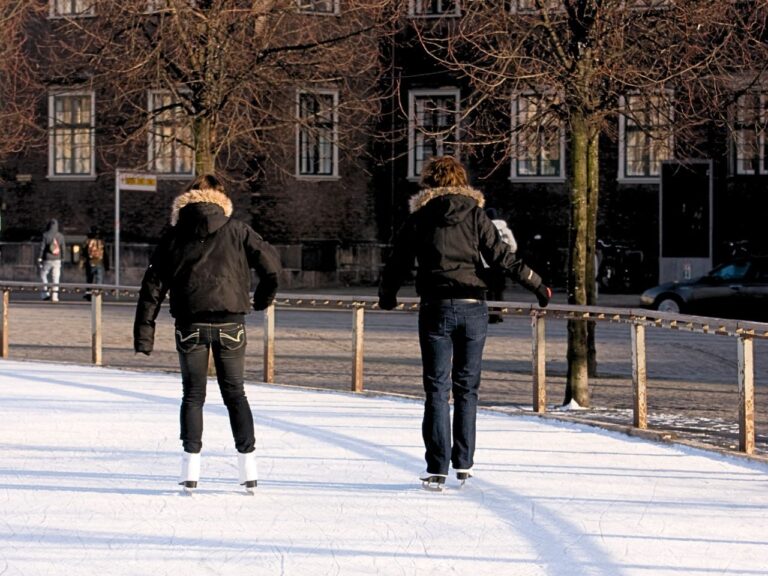One-Stop Guide to Stevns Klint You’ll Only Need

Planning to visit Stevns Klint? Denmark’s most fascinating UNESCO World Heritage Site!
Stevns Klint is a 17 km-long, fossil-rich white limestone cliff, 41 m high (at the highest point) on Denmark’s Baltic coast.
I’ve hiked and camped in Stevns Klint’s coastal trails twice, and I can tell you it has several activities for the whole family.
Whether you’re a nature lover, a history buff, or simply seeking a peaceful escape, Stevns Klint is a must-visit.
In this one-stop guide, I’ve shared everything you need to know—from the best viewpoints, historic attractions, and hiking routes to practical tips for making the most of your visit.
Let’s explore Stevns Klint, Denmark!
In This Post:
Stevns Klint UNESCO Heritage Site
Stevns Klint earned its spot on the UNESCO World Heritage site list in 2014.
Stevns Klint is not just another scenic cliff—It is one of the most significant natural history sites on the planet.
Stevns Klint holds exceptional evidence of the Chicxulub meteorite impact that triggered the fifth mass extinction around 66 million years ago. This catastrophic event wiped out the dinosaurs and nearly 50% of all life on Earth, that paved the way of life as we know it today.
What makes Stevns Klint a UNESCO site is the visible layer of fish clay at the K-T boundary (Cretaceous-Paleogene boundary) along the cliff.

This thin, dark band contains iridium-rich sediment, a rare element on Earth but are commonly found in meteorites.
Top 15 Things To Do at Stevns Klint UNESCO Site
1. Stevns Klint Experience Museum
The Stevns Klint Experience Museum is the best place to start your visit before heading to the UNESCO site itself. I recommend stopping here first to make the most of your visit.
The museum offers a fascinating journey through the history, geology, and significance of Stevns Klint with a special focus on the Fifth Great Mass Extinction, and a VR experience about the evolution of humans and Earth.
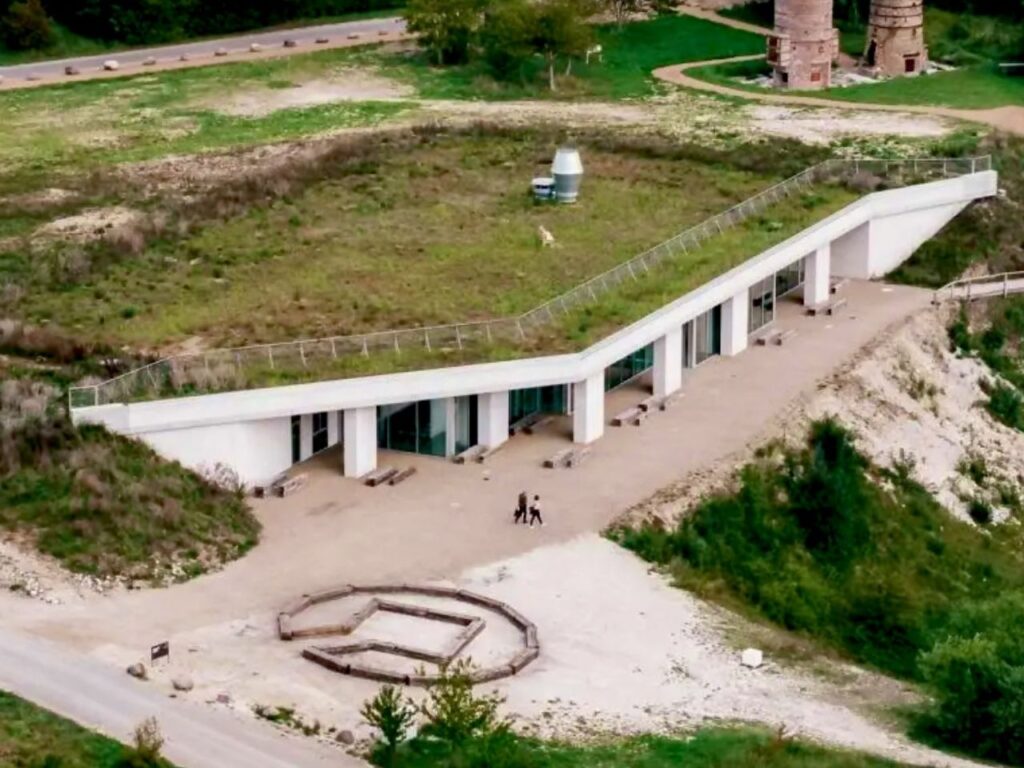
The museum is built into the limestone cliff. Inside, you’ll find a foyer, café, shop, and several exhibition rooms.
- Opening Hours: From October to May, it is open from Tuesday to Sunday between 10:00-16:00. During the high season from June to September, it is open on all days from 10:00 to 17:00.
- Entry Fee: 140 DKK for adults, free for children under 12
2. Hiking Stevns Klint Trampesti
Stevns Klint Trampesti (footpath) is a hiking trail that offers breathtaking views of the Baltic Sea. Most people visiting Stevns Klint just stick to the popular cliff section near Højerup. But they’re seriously missing out.
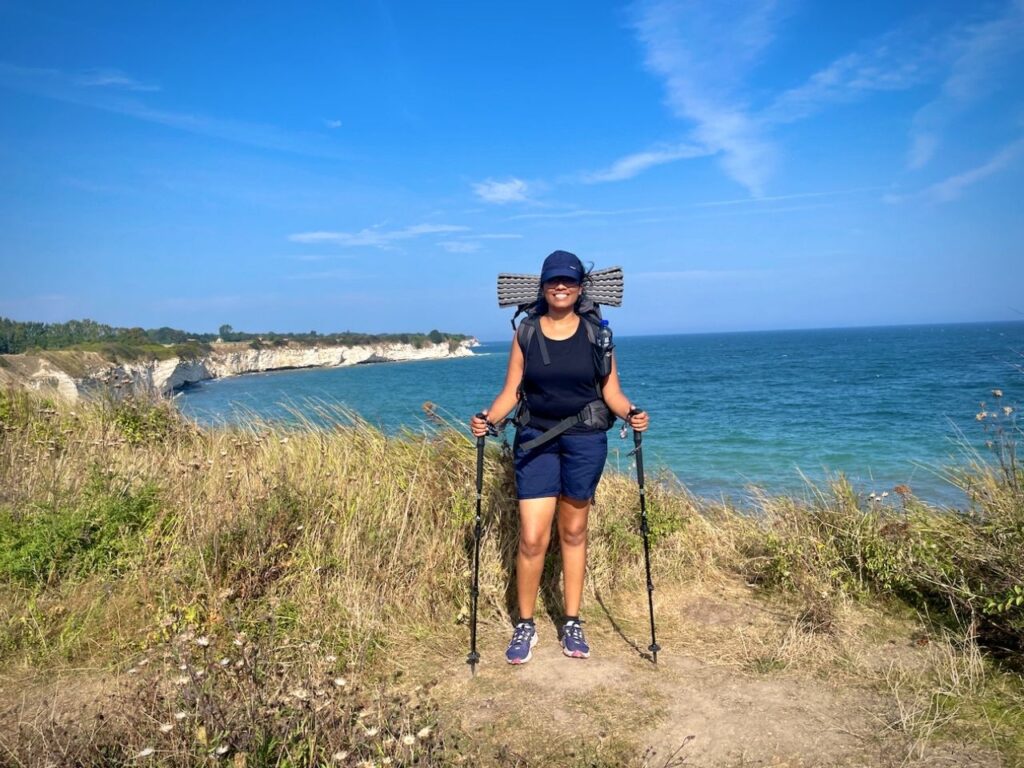
The Trampesti footpath stretches about 18.5 km from Bøgeskov Harbour in the north to the port town of Rødvig in the south. You can hike the entire trail or just a section.
My favorite route is the 6.5 km stretch from Rødvig to Højerup. It’s easy to walk and offers stunning views of the cliffs, the sea, and the surrounding fields. Plus, you’ll pass some fascinating spots along the way, like Stevns Lighthouse, the Cold War Museum, the Boesdal Limestone Quarry, and the half-collapsed Old Højerup Church.
If you’re hiking with kids, keep a close eye on them, especially near the cliff edges, as there are no fences.
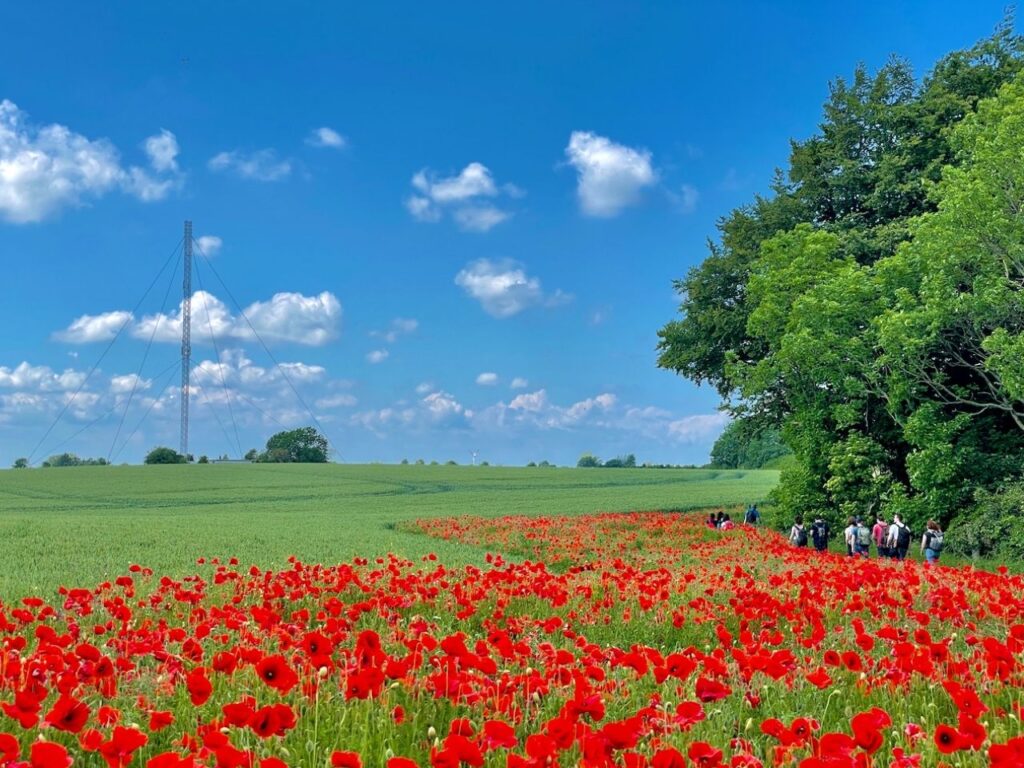
Dogs are welcome on the trail—just remember to keep them on a leash and clean up after them.
One thing to keep in mind is that the trail runs through private land in some areas. Be respectful of the owners’ instructions and avoid using any private descents.
3. Højerup Gamle Kirke (Højerup Old Church)
Højerup Gamle Kirke sits dramatically at the edge of Stevns Klint at 30 m high, offering stunning views of the Baltic Sea from the church balcony.
The church was built from local limestone in the 13th century and was consecrated in 1357. On March 16, 1928, due to erosion over the years, the choir of the church collapsed into the sea. The disappeared choir is replaced by the viewing deck.
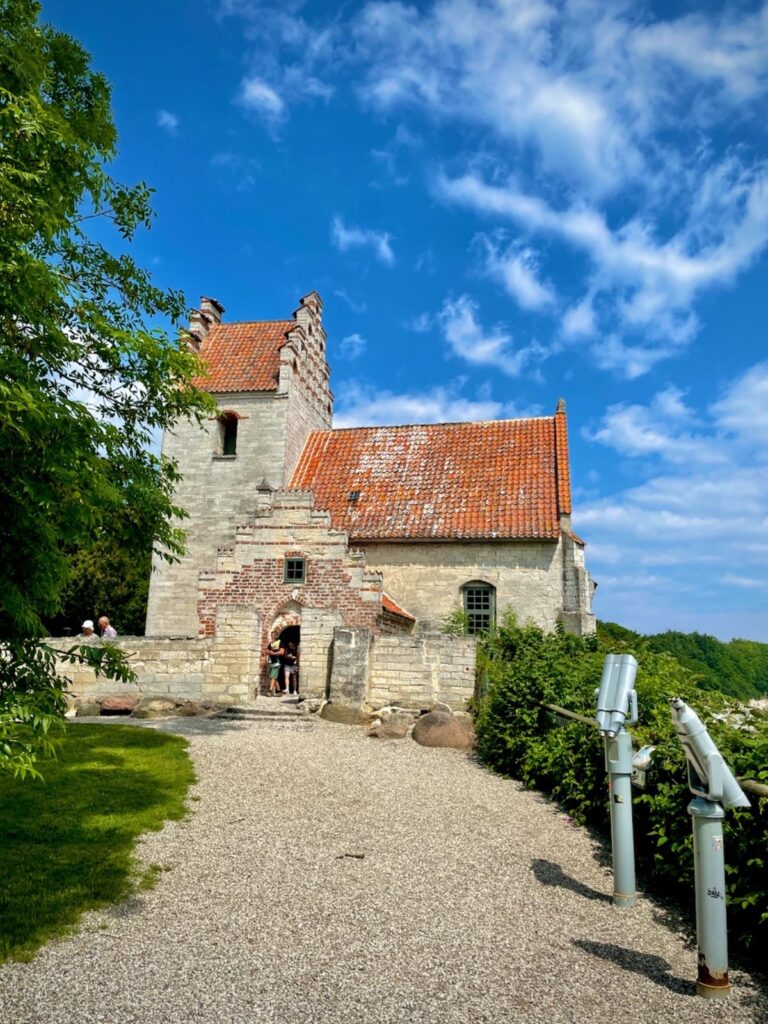
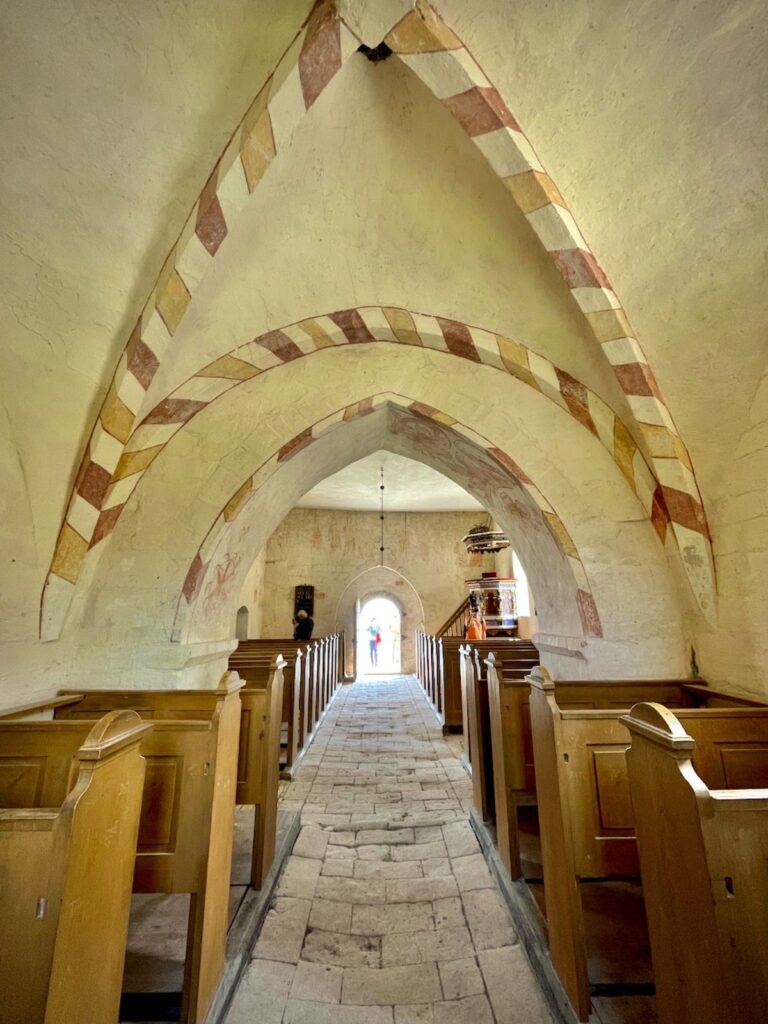
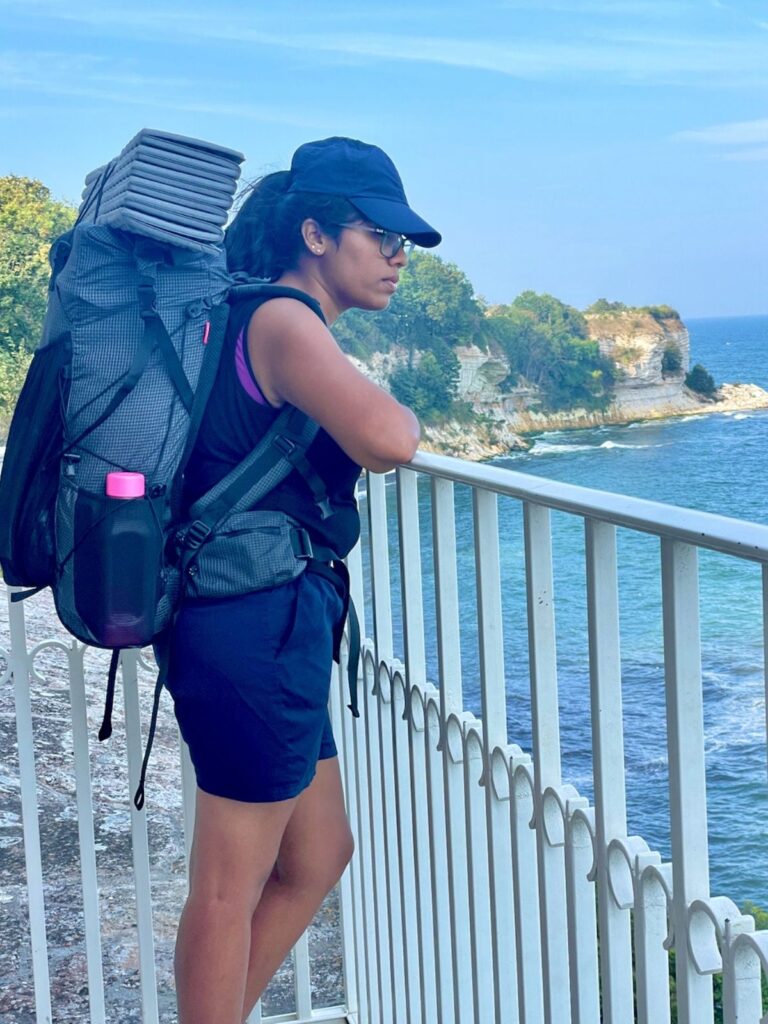
What remains is a popular tourist attraction and part of the UNESCO World Heritage Site.
- Opening Hours: Daily from 10:00 to 17:00 from Easter to October 31 and from 10:00 to 16:00 from November 1 to Easter.
4. Go Swimming and Fishing at Stevns Klint Beach
Stevns Klint Beach is good for swimming and fishing. The swimming season is from April 1 to September 30.
In fishing circles, Stevns is mentioned as one of the top places to fish for sea trout in the country.
You can reach the pebbled beach by taking the staircase near Højerup Old Church.
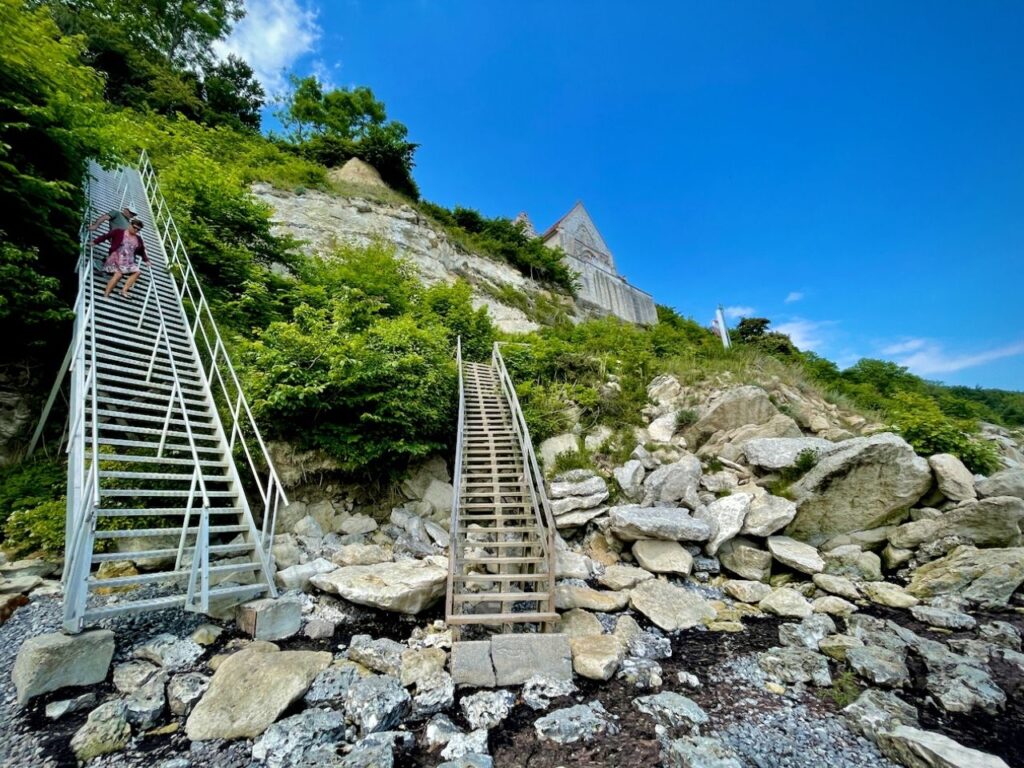
Dogs are welcome on the beach, but you have to keep them on a leash.
5. Collect Fossils
If you love fossil hunting, Stevns Klint is the place to be. The Cretaceous chalk in the cliff is packed with over 450 species of macrofossils and countless microfossils.
While walking along the beach, you can find coccolith fossils, but if you’re lucky, you might stumble upon shark teeth, crocodile teeth, or even a mosasaur tooth.
I once found a stunning sea urchin fossil and several fragments of fish skeletons and shells. For the best fossil hunting spot, head to Holtug Kridtbrud, a quarry-like area just north of Stevns Klint.
While you are allowed to collect fossils at Stevns Klint, there are a few guidelines to follow. Stick to loose blocks that have fallen rather than the cliff itself. The Fish Clay layer is off-limits, being a UNESCO site, and you can only pick fossils by hand—no tools are allowed.
And if you’re fascinated by fossils, make sure to visit the Geomuseum Faxe, about 25 km away.
6. Spot the Fishclay
The Fish Clay at Stevns Klint is a thin, black or grey sediment layer between the white chalk and yellow limestone. It contains traces of the asteroid that struck the planet 66 million years ago.
It’s mind-blowing to think you can see the remnants of that catastrophic event up close.

Fishclay is only about 5 cm thick, located just under the large overhang in the middle of the cliff. However, it is pretty high up on the cliff, so you’ll need a decent zoom lens or binoculars to get a clear view.
The best place to spot it is near Højerup Old Church or from the viewpoint just south of the church.
Did you know? Walter Alvarez, an American geologist, was the first to discover asteroid traces in Stevns Klint’s Fish Clay, providing key evidence for the theory that an asteroid caused the mass extinction of the dinosaurs.
7. Hop on the Free Electric Bus
Hop on the free electric bus and explore Stevns Klint without spending a krone on transport!

The bus runs a circular route between Rødvig Harbour and Bøgskov, stopping at 11 key locations—including the Cold War Museum, Stevns Lighthouse, Højerup’s old church, and Store Heddinge station.
If you only want to hike along Stevns Klint Trampesti in one direction, you can take the shuttle bus, which takes you back to your starting point.
It’s a convenient and eco-friendly way to get around. You can check the detailed route map here.
8. Koldkrigsmuseum Stevnsfort (Cold War Museum Stevnsfort)
Koldkrigsmuseum Stevnsfort offers a fascinating journey into Denmark’s Cold War history.
Explore the dimly lit 1.7 km-long tunnels carved into the limestone, located 18 meters below ground. The fort has been left almost untouched since it closed in 2000.
Built as a first line of defense for NATO and Denmark, Stevnsfort was designed to guard the Baltic coast against a potential invasion from the Warsaw Pact.
Though located on land, the fort was actually part of the Danish Navy, while the HAWK missile battery—still on display above ground—belonged to the Air Force. The HAWK system, which was active from 1984 to 2000, stands as a powerful reminder of the era’s tension.
Stevnsfort is also part of the UNESCO World Heritage Site of Stevns Klint.
- Entry fee: 95 DKK for adults, free for children between 0 and 17 years. You can explore on your own
- Guided tour for 1.5 hours: 190 DKK for adults and 110 DKK for children (4-17 years), while kids under 4 can join for free. The price includes the entry fee.
Outside the fence surrounding the Cold War Museum Stevnsfort, you can see canons where the guns had a range of 23 Km (14 miles) and could reach the Swedish coast.
9. Boesdal Kalkbrud (Boesdal Limestone Quarry)
Boesdal Kalkbrud contains ‘The Pyramid’, a massive 3,000 m² cone-shaped warehouse that once stored agricultural lime quarried and crushed on-site.
Today, it’s been a recreational center. You can still walk inside and have a look.
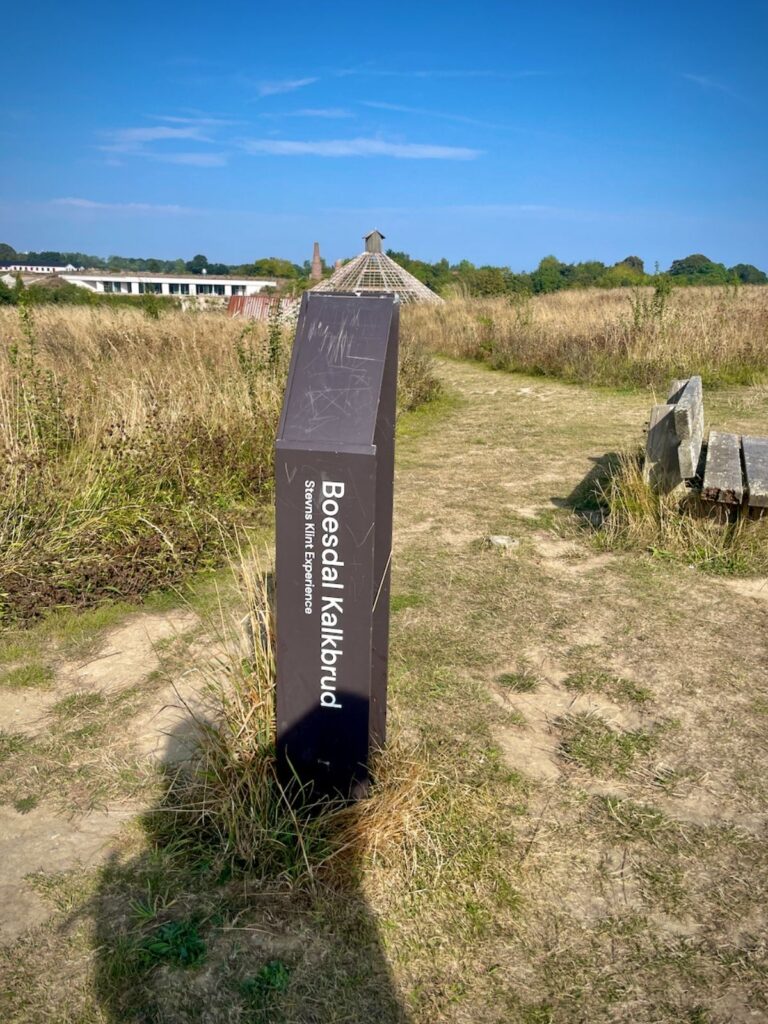
Limestone extraction began here in 1914 and continued until 1978. The remains of the old lime kilns, once used for heat-treating the limestone, still stand.
You’ll find information boards detailing the quarry’s industrial past. Boesdal Kalkbrud is also a part of the UNESCO World Heritage site of Stevns Klint.
From the quarry, you can walk down to the water and enjoy breathtaking views of the cliffs and the Baltic Sea.
Another chalk and limestone quarry in the vicinity is Holtug Kridtbrud, which was mined until 1972. In 1991, the Danish Forest and Nature Agency bought the quarry, so it is now protected.
Did you know? The limestones can be seen as building blocks in approximately 1,000 Stevns houses.
10. Birdwatching at Stevns Klint
You can witness the bird migrations at Stevns Klint, especially during spring and autumn.
In spring you can see cranes and in autumn, predatory birds migrating south. You may also see Rose Finch which is rare to Denmark. The best spot to catch this spectacle is at Mandehoved.
Refer to the article by Lars Juul for the different varieties of birds that can be seen at Stevns Klint.
As you stroll along the Stevns Klint Trampesti, don’t forget to keep an eye on them!
11. Stevns Fyrcenter (Stevns Lighthouse)
Stevns Lighthouse is a must-see place when visiting Stevns Klint.
Built in 1878 from chalk stone carved from the cliff, the lighthouse stands 27 meters (88.6 ft) tall and sits 41 meters (134.5 ft) above sea level. The steps to the top are narrow and are around 100.
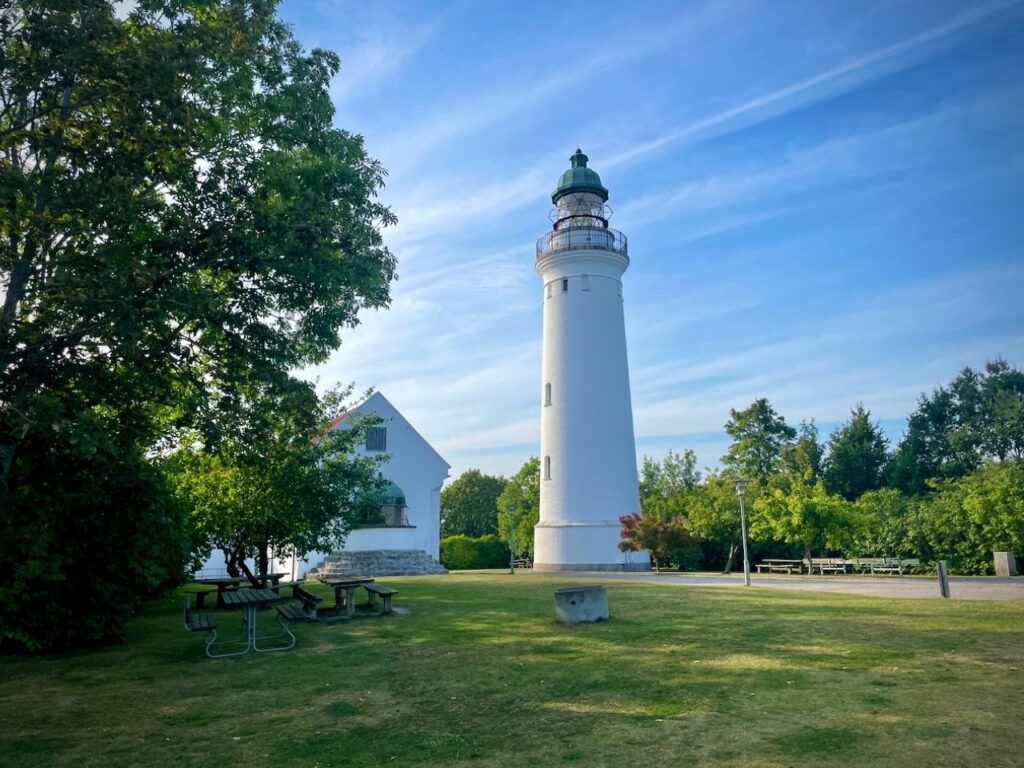
The panoramic view from the top is spectacular. On a clear day, you can spot Møn Island, the Øresund Bridge, parts of Copenhagen, and even Sweden in the distance.
It’s free to climb the lighthouse. There are even binoculars available at no cost.
You can also step inside the old lighthouse keeper’s residence, which has a fascinating exhibition about Stevns Lighthouse and the geology and nature of Stevns Klint.
The lighthouse is open Monday to Friday throughout the year from 11:00 to 15:00. Between March and October, it is open on Saturday and Sunday from 11:00 to 17:00, and from November to March, from 12:00 to 15:00.
The lighthouse keeper’s residence, however, is only open on Saturdays, Sundays, and public holidays from 12:00 to 16:00.
Pro tip: There’s free parking right next to the lighthouse. If you’re heading to Højerup Old Church, park here instead of paying 40 DKK for parking at the church. The walk between the lighthouse and the church is only 1.5 km along the cliff.
12. Experience Stevns Klint from Waters
Hop aboard a Triton Pontoon boat for a two-hour sailing tour to admire Stevns Klint’s beauty from a whole new perspective. The boating season kicks off in mid-April, with tours running Tuesday to Sunday at 10:15 AM and 2:15 PM.
The boat can hold up to 12 passengers. Just keep in mind—there need to be at least five people for the trip to set sail.
Departing from Rødvig Harbour, the boat glides past some of the region’s highlights, including the Rødvig Flint Kiln, Boesdal Limestone Quarry, and the Stevnsfort Cold War Museum. The journey reaches its turnaround point at the historic Højerup Old Church.
Along the way, you’ll hear fascinating stories about Stevns Klint—its history, geological significance, and UNESCO heritage status.
Since it’s often windier and chillier at sea, I recommend bringing a warm sweater or jacket. You’re welcome to bring a bottle of water, but food and other drinks aren’t allowed on board.
Tickets cost 275 DKK for adults and 175 DKK for children under 12. If you’re with a larger group, you can book the entire boat for 2,200 DKK, which accommodates up to 11 passengers.
13. Camping at Stevns Klint
Camping at Stevns Klint is the ideal way to slow down and truly soak in the beauty.
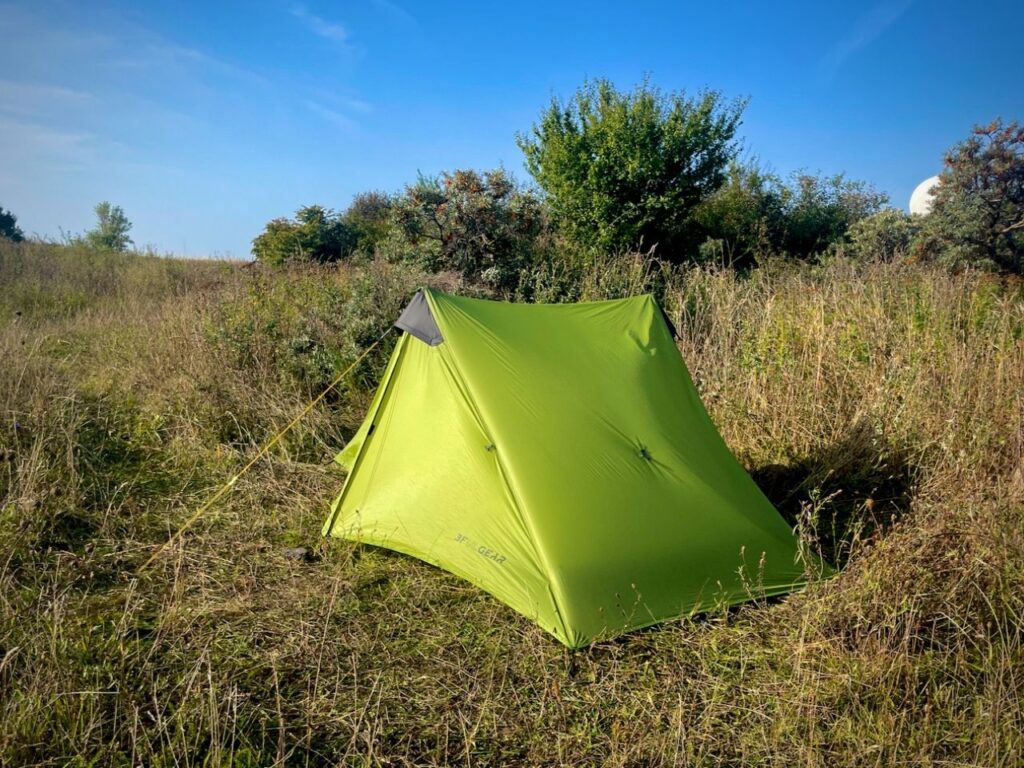
If you’re visiting Stevns Klint from Copenhagen, spending the night here lets you experience the sunrise over the Baltic Sea, painting the chalk cliff in golden hues is absolutely breathtaking.
If you’re into stargazing, head to Højerup or Mandehoved on a clear night. You’ll see a sky bursting with stars—and if you’re lucky, even catch a glimpse of the Milky Way.
Camping is only allowed in designated areas since most of the area at Stevns Klint is privately owned. Here are some great options:
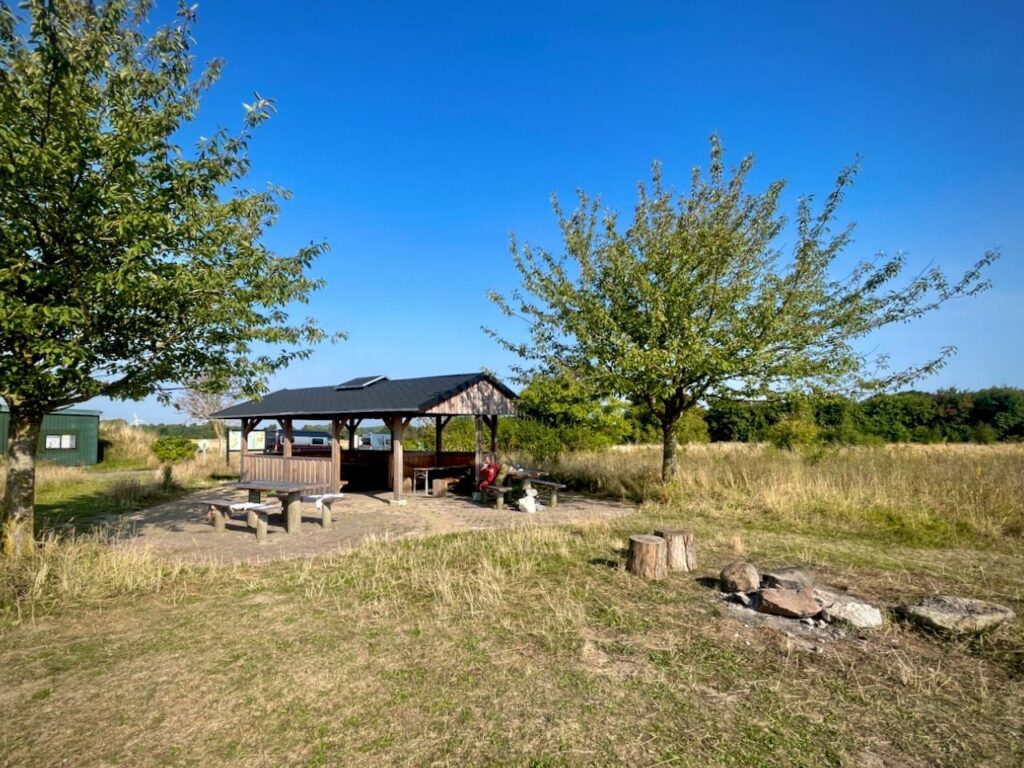
- Stevns Nature Center: Offers scenic spots but requires booking in advance. You can reserve here: Stevns Nature Center.
- Stevns Camping: A campsite with amenities. Check it out here: Stevns Camping.
For more camping spots and shelters in the area, check out Friluftsguiden.
14. Holtug Kridtbrud
The disused chalk quarry is a conservation area due to the special flora and fauna that live here. From the bottom of the quarry, you can different layers including the ehite chalk, the dark fishclay, and the hard limestone at the top.
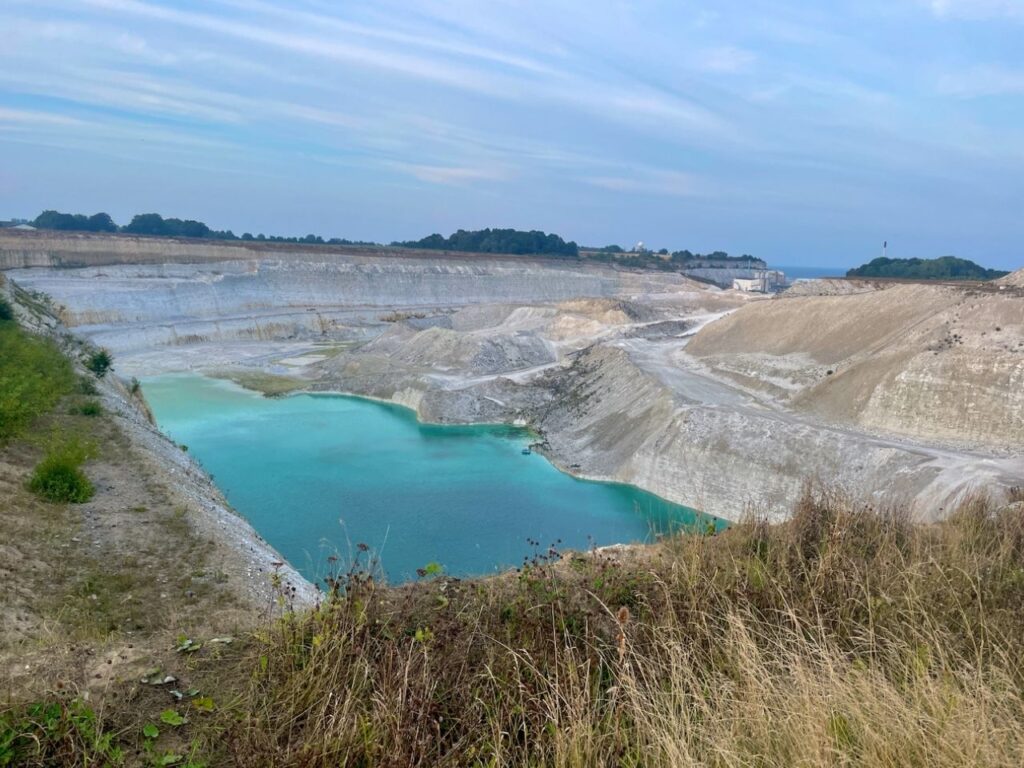
Among the rare plants, Common Moonwort and Nortingham Catchfly can be seen. In the small pond, you can find rare Crested Newt which is protected. Fishing is prohibited in the area.
Make your way safely down to the quarry and out on to the beach.
15. Go on a Stevns Klint Guided Tour
If you want to visit Stevns Klint hassle-free, I highly recommend this guided tour from Copenhagen.
It’s the best-rated tour and perfect if you want to learn more about the site’s fascinating history without worrying about transportation.
The tour includes round-trip transport, entry to the Stevns Klint Experience Museum, a guided tour of Højerup Old Church, and even Wi-Fi on board!
It’s a stress-free 8-hour day trip and an insightful way to explore this UNESCO heritage site.
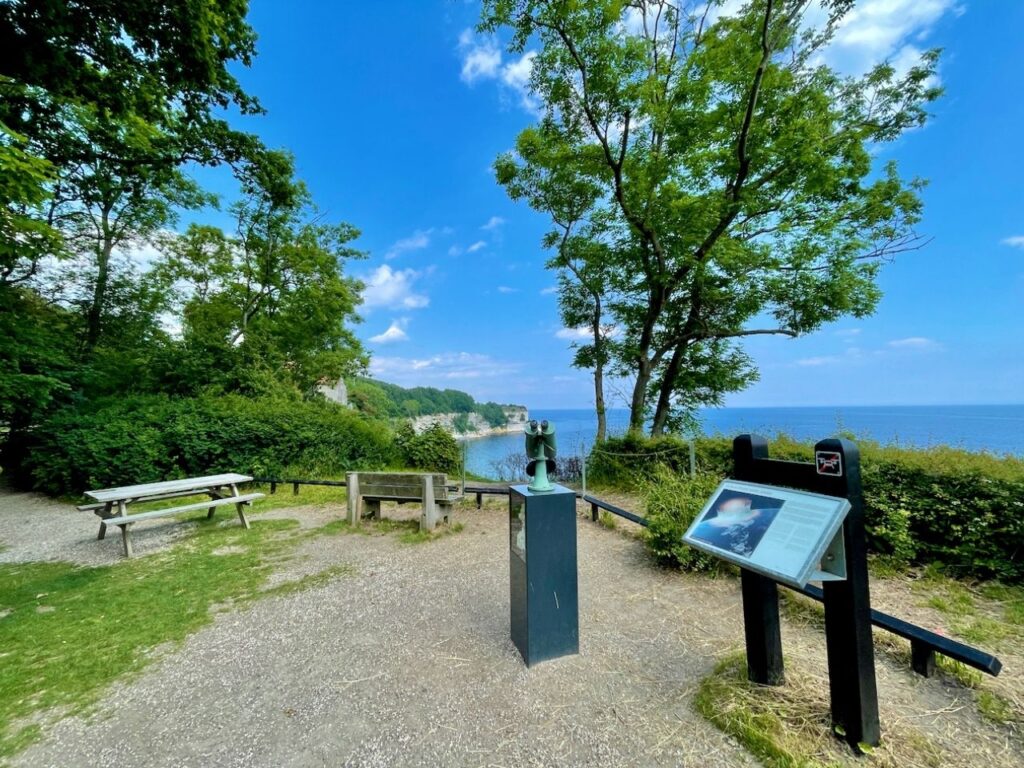
16. Cycling at Stevns Klint
Cycling around Stevns Klint is a fantastic way to explore the area.
You can rent bikes from Donkey Republic via their app or website and pick them up at Store Heddinge, Højerup, or Rødvig.
Just keep in mind that cycling on the footpaths along the cliff is not allowed to protect the fragile landscape. But don’t worry—there are bicycle parking spots along the route where you can safely leave your bike and continue exploring on foot.
Pedaling through the countryside and stopping at key attractions at Stevns Klint is time-saving if you like to explore everything in one day.
Stevns Klint Map for Visitors
Many people also take a detour to visit Gjorslev Castle, 10 km away from Stevns Klint.
How to Get from Copenhagen to Stevns Klint?
Getting from Copenhagen to Stevns Klint takes some planning since there’s no direct public transport. You’ll need to change at least twice, typically at Køge and Hårlev/ Store Heddinge stations.
The journey is about 75 km one way and takes around 1.5 hours by car—longer if you’re using public transport.
In the Rejseplanen app, enter Stevns Klint or Højerup (Korsnæbsvej) as your destination (if you like to check the fish clay first)—it’ll show you the best connections, travel times, and prices. You can also use Google Maps, but keep in mind that it won’t display real-time delays.
To save money, I recommend buying a City Pass, which covers all public transportation—buses, trains, and Metro. It’s much cheaper than buying separate tickets, especially if you plan on traveling back and forth on the same day.
Where to Stay at Stevns Klint?
If you’re staying overnight near Stevns Klint, Store Heddinge and Rødvig has some great options.
- Rødvig Ferieby – A comfortable holiday home ideal for families and groups of friends.
- Danhostel Stevns – Budget-friendly hostel.
- Dambækgaard – A farm stay with catering.
- Rødvig Kro & Badehotel – A lovely seaside spa hotel with stunning views.
Restaurants in Stevns Klint
If you’re wondering where to eat near Stevns Klint, there are a few good restaurants around. My top recommendations are Traktørstedet Højeruplund and Stevns Klint Mad & Ro.
However, keep in mind that most restaurants in the area open late—around 12:00 PM. So, if you’re planning an early visit, it’s a good idea to pack some snacks or grab some Danish pastries beforehand, especially if you’re visiting with kids!
FAQs on Stevns Klint UNESCO Site
How much is the entry fee to Stevns Klint?
You can explore the UNESCO World Heritage site of Stevns Klint for free. The stunning cliffs and walking trails are open to all. However, if you want to visit the Experience Museum or the Cold War Museum, you’ll need to pay an entry fee.
Is Stevns Klint worth visiting?
Absolutely! Stevns Klint is a natural and geological site with white limestone cliffs, scenic walking trails, and breathtaking coastal views. It’s also a UNESCO World Heritage site, famous for its visible traces of the asteroid impact that wiped out the dinosaurs.
When is the best time to visit Stevns Klint?
Stevns Klint can be visited all year round, but for a quieter and more pleasant experience, the best time to visit is during spring (March – May) and autumn (September – November). Weekends and summer months tend to be busier.
Are Drones allowed at Stevns Klint?
No, drones are strictly prohibited at Stevns Klint, as it is a UNESCO World Heritage site.
Can I collect fossils at Stevens Klint?
Yes, you can collect fossils at Stevns Klint, but there are a few guidelines to follow. Stick to loose blocks that have fallen rather than the cliff itself. The Fish Clay layer is off-limits, and you can only pick fossils by hand—no tools are allowed.
What are the attractions and places to see at Stevns Klint?
Stevns Klint cliff UNESCO site, Højerup old church, Cold War Museum, Stevns lighthouse, beach, Stevns Klint Experience museum, and Boesdal Kalkbrud are must-visit attractions and places to visit in Stevns Klint.
How to travel to Stevns Klint from Copenhagen using public transport?
The most affordable way to reach Stevns Klint is by public transport, but there’s no direct route. You’ll need to take a combination of trains and buses. To plan your journey, use the Rejseplanen app, which will show you the best route and connections from your location.
Final Thoughts: Ultimate Guide to Stevns Klint Denmark
Stevns Klint is one of my favorite places to hike in Denmark, and if you’re visiting Copenhagen or exploring Zealand, it’s definitely worth adding to your itinerary.
From the cliffside walk, which offers panoramic sea views, to the long, open beach and the excitement of spotting migratory birds in autumn, this place is truly unforgettable. Add in the rich history and the chance to camp under the stars, and it’s an experience like no other.
For more unique activities like this, follow my blog and join me on Facebook for the latest updates!
Denmark Travel Checklist
More Posts
- Go hiking to find the forgotten giants in greater Copenhagen
- What to do in Roskilde on a day trip from Copenhagen?
- 5 days in Copenhagen: Things to do and places to visit
- Best beaches in and near Copenhagen
- An ultimate guide to family travel in Copenhagen
- What to do in Copenhagen with kids: 50+ activities!
- Top things you shouldn’t miss in Christiania!
- Best bakeries in Copenhagen you must visit
- Fascinating verified facts about Denmark you did know!

